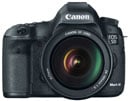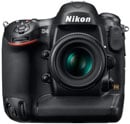Nikon D800 review
-
-
Written by Gordon Laing
Verdict
I’ll cut straight to the chase: Nikon’s D800 raises the bar of what we can expect from a DSLR in terms of still image quality. Alarm bells may have rung when Nikon announced the D800 would pack three times more pixels than its predecessor the D700, but its sensor engineers have done a remarkable job and the result are 36 Megapixel images which are absolutely jam-packed with detail and suffer from a lot less noise than you’d think. The D800 really is getting close to delivering medium format quality but in the smaller, quicker and more affordable DSLR form factor.
The D800 isn’t just about still image quality though. In the three and a half years since the D700, Nikon has greatly improved the video recording capabilities, bringing it much closer to Canon while boasting a few neat tricks its rival lacks. Indeed the D800 shares almost exactly the same video specifications as the flagship D4, while also inheriting its 51-point AF system, 91k metering sensor and 3.2in screen.
As a top-end Nikon DSLR, the ergonomics and build quality are superb, and further treading on the toes of medium format is the D800E version which removes the anti-aliasing filter to maximize potential sharpness. This is a seriously impressive DSLR with quality to match, but of course it has a significant rival in the form of Canon’s EOS 5D Mark III which manages to out-perform it in a number of key respects. Before my final verdict, I’ll now go over the pros and cons of the D800, explain how it differs from the Canon and help you decide which model will be best for you in practice.
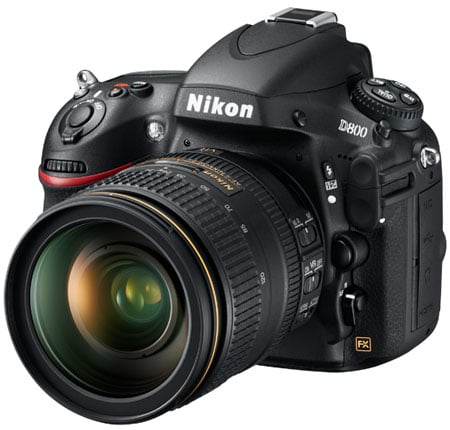 | |
I’ll start with image quality. If you only know one thing about the D800 it’s the 36 Megapixel resolution: three times that of the D700 and 50% more than its big rival, the Canon EOS 5D Mark III. Indeed it’s fascinating to see the different approach of Canon and Nikon with the former only slightly adjusting the resolution of its 5D series, while the latter reaches for a considerably higher figure.
The D800’s resolution is about more than just grabbing headlines though – it really does deliver the goods. Still images are absolutely packed with fine detail and you’ll enjoy great results straight out of the camera with a very natural approach to JPEG processing using the default settings. Take a look at my first Nikon D800 quality page and you’ll see its out-of-camera JPEGs look so much better than the arguably over-cooked ones from the 5D Mark III.
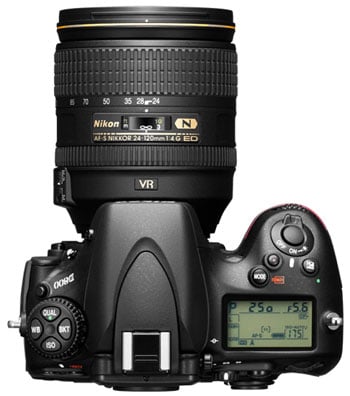 |
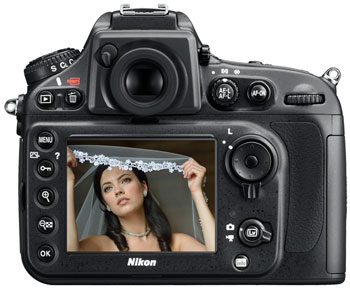 |
Resolution is one thing, but what about noise? In terms of JPEGs, the D800 and 5D Mark III perform as you might expect: the Nikon enjoys greater detail at low ISOs, while the Canon enjoys lower noise at high ISOs, with the cross-over point around 800 ISO.
But switch both cameras to RAW and turn off noise reduction and you’ll discover a surprising result: the Nikon D800 and 5D Mark III actually share remarkably similar levels of noise at each ISO setting, and that’s viewing them at 100% with no down-sampling. Take a look at my Nikon D800 RAW Noise page and you’ll see it deliver essentially the same graininess despite packing 50% more pixels onto the sensor. You’re getting the benefit of resolution without suffering from noise.
This is a fantastic result for the D800 and while the 5D Mark III also benefits from shooting in RAW without noise reduction, the D800 enjoys the edge overall. As such I can confidently say the D800 enjoys superior image quality to the 5D Mark III in terms of resolution and roughly the same quality in terms of noise when viewed at 1:1. Down-sample the D800’s images and the noise levels become a little more discreet, arguably giving it a small edge over the Mark III, but in my tests without noise reduction the difference was minor. Down-sample after applying noise reduction though and you may enjoy greater benefit.
So if you shoot stills, the D800 has the potential to deliver better quality than the 5D Mark III. You also get deeper bracketing up to nine frames, along with built-in intervalometer and timelapse capabilities which you don’t get on the Canon without bringing along (or buying) extra gear. It really all adds up to a still shooter’s dream.
The upgrades in the video department also make a significant difference over earlier Nikon DSLRs and bring the D800 to a similar level to Canon’s offerings. In some respects the D800 is better with a nice clean HDMI output to send to an external recorder, a 1.5x crop mode and a neat pair of buttons by the lens mount to adjust the aperture – although in a missed opportunity these are disabled when the camera starts filming, so you’ll only be exploiting them with an external recorder.
The ergonomics and build are as good as we’ve come to expect from a higher-end Nikon body, with the D800 feeling comfortable and supremely confident in your hands. There’s also a number of smaller but welcome features, including an Auto ISO option which takes lens focal length into account, the ability to autofocus at f8 (handy when using teleconverters), dedicated graphics for a dual-axis leveling gauge in the viewfinder and a sophisticated new metering system. And even though these were present on its predecessor, it remains a classy touch having a popup flash and a built-in viewfinder curtain, neither of which you’ll find on the Canon EOS 5D Mark III.
But this doesn’t make it a better camera overall. First I should note to exploit the full resolution of the D800, you’ll need to handle it like a medium format camera, use a tripod and focus very carefully. This is not a camera to use casually if you want the best results. I tested the D800 alongside the 5D Mark III and found when shooting handheld, both cameras would deliver similar degrees of detail. It was only when I firmly mounted the D800 on a decent tripod and spent some time getting the focus spot-on that it would out-resolve the 5D Mark III. So think carefully about how you shoot if you’re chasing ultimate detail: the D800 is unlikely to give you much benefit over a 20 Megapixel camera if you’re shooting handheld, and suffice it to say you’ll also want to couple it with the sharpest lenses around.
Secondly for all the enhancements to the movie mode, the actual output remains inferior to the EOS 5D Mark III with the D800 suffering much more noise at high ISOs and visible moiré artefacts. So while there are some movie benefits over the Mark III, most serious videographers will still prefer to shoot with the Canon for its cleaner output.
It’s also important to look beyond the continuous shooting specifications and try them out in practice. Nikon may not pretend it can shoot faster than 4fps at the full resolution, but what it doesn’t tell you is how long you’ll be waiting for the buffer to flush. For example I shot 100 JPEGs with the D800 at 4fps and over 100 with the Mark III at 6fps, but the Canon took about one second to flush compared to over a minute with the Nikon – and that’s using the same card. Revealingly the D800 may boast UHS-1 compatibility over the Mark III, but the Canon will still flush images onto them much faster, even taking file sizes into consideration.
Couple the relatively small bursts and long buffer times with a less sophisticated AF system and it’s clear the D800 is not best-suited as an action camera. It can do it, but the 5D Mark III will do it better. If you’re into continuous shooting, please do read this section in my main review for my detailed report.
I should also mention the D800’s metering system, like many Nikon DSLRs before it, remains strangely fooled by very bright scenes. When shooting my standard outdoor test scene under the bright conditions of Queenstown New Zealand, I found the D800 could over-exposure by as much as one stop. Cameralabs’ contributor Ken McMahon has also noticed the same thing when shooting around Cornwall UK. Once you know about it, you can of course dial-in some exposure compensation, but really why should you when it’s not an issue for any other camera I’ve tested?
By now the strengths and weaknesses of the D800 and 5D Mark III should be clear. Yes you can use both to shoot great quality images, but the D800 will out-resolve the Mark III if you shoot carefully and if you record in RAW there’ll be no compromise in noise either. Yes, both will film Full HD video, but the Mark III will deliver footage with less visible moire and its magnified Live View mode is more detailed too. Yes, both can shoot continuously, but the 5D Mark III is quicker and flushes its buffer considerably faster. Yes, both have sophisticated AF systems, but the Canon boasts far more cross-type sensors along with presets for different real-life conditions.
Ultimately when shooting alongside its rival, the D800 feels like more of a specialist camera, ideally suited to landscape, studio and architectural photographers who shoot in a considered fashion and desire very detailed images but can’t stretch to a medium format system; it’s also important to note it’s cheaper than the Mark III too and additionally available in a version without an anti-aliasing filter.
In contrast, the 5D Mark III feels like more of an all-round camera which still takes great quality photos, but is better for video and sufficiently quick to be considered by action shooters who’d previously carry a Mark II for full-frame coverage or depth-of-field along with a 7D for speed. Again you can of course shoot or film anything with either camera, but I’m drilling-down to their strengths to help you decide between them if you don’t already have an existing investment in lenses.
So before my final verdict, here’s the main pros and cons once more.
Compared to Canon EOS 5D Mark III
Canon’s EOS 5D Mark III represents the biggest competition for the Nikon D800. Both are high resolution semi-pro full-frame bodies with Full HD video and stacks of features including 100% viewfinder coverage, twin card slots and both microphone and headphone jacks – but refreshingly both companies have taken quite different approaches to headline specifications.
The biggest difference of course regards resolution: 36 Megapixels on the D800 versus 22.3 Megapixels on the 5D Mark III – that’s 50% more pixels squeezed into the same surface area of the Nikon. In terms of linear resolution, the D800 records 7360×4912 pixels, which at 300dpi could be reproduced at 24.5×16.4in. The 5D Mark III records 5760×3840 pixels, which at 300dpi could be reproduced at 19.2×12.8in. So in terms of resolving power, the D800 enjoys a measurable advantage and greater latitude for cropping.
Impressively if you shoot in RAW and turn off noise reduction, you’ll also find the D800 delivering similar degrees of noise as the Mark III when viewed at 100%. So when it comes to stills, the D800 delivers more detail than the Mark III without compromising noise.
Moving on, the D800 has more sophisticated metering (91k sensor versus 63-zone), a faster flash sync speed (1/250 versus 1/200), a popup flash with wireless flash control, deeper bracketing (nine frames versus seven), a choice of crop modes including a 1.5x option for video, clean HDMI output (for feeding an external recorder), a shutter block rated for 200,000 versus 150,000 actuations, the ability to AF with a limited number of points at f5.6 to f8, built-in timelapse and interval timer options, and a USB-3 port (versus USB-2 on the Canon). The D800 also claims to exploit the speed of UHS-1 SD cards, although in my tests the flush times of the Canon were often quicker, even taking file sizes into account.
In its favour, the Canon EOS 5D Mark III has a more sophisticated AF system (61-points with 41 cross-type sensors versus 51-point with 15 cross-type sensors), faster continuous shooting at the maximum resolution (6fps versus 4fps, although the Nikon can be boosted to 6fps in its 16 Megapixel DX mode with the battery grip), much faster flushing of the buffer, two stops higher maximum sensitivity (102,400 ISO versus 25,600 ISO), a wider screen which matches the shape of images, thereby maximising their displayed size and detail, silent control over aperture and other settings while filming video (the D800 only has aperture control buttons which become inactive when recording), lower noise and less moire effects on video, and built-in HDR with three frames versus two.
Ultimately as detailed above and below, the D800 has the potential to deliver better quality stills than the Mark III, but the Canon enjoys faster handling and better video, arguably making it a better general-purpose camera. It all depends where your priorities lie.
Before concluding though, it’s important to note Nikon offers an alternative version of the D800 with the effect of the anti-aliasing filter removed: the D800E version unlocks the maximum resolution of the sensor and hands-over moiré management to the photographer. This option, along with the high resolution of the sensor shows Nikon going after those who demand the maximum resolvable detail without investing in medium format equipment; indeed in this respect the D800 can be seen more as a medium format rival than a direct competitor to the 5D Mark III.
Oh yes and there’s one final important difference to note: the RRP of the D800 is less than the 5D Mark III by a not insignificant amount.
For more details see my Canon EOS 5D Mark III review.
Compared to Nikon D4
The D4 is Nikon’s flagship professional sports DSLR and targets a completely different market to the D800; it’s a completely different price point too, costing twice as much. But as you’ll have discovered by now, the D800 shares a great deal of key technologies with the D4, which of course begs the question, what exactly sets them apart?
I’ll start with what’s in common: both the D4 and D800 are full-frame DSLRs with 100% viewfinder coverage and twin memory card slots. They share the same 51-point AF system, the same 91k metering system, the same 3.2in screen and almost exactly the same movie capabilities.
Now for what’s different, starting with what’s in the D4’s favour. Most obviously it’s physically larger and heavier which may not be seen as an advantage to some, but it is tougher and better weather-proofed overall. You also get a portrait grip and heftier battery pack as standard. The D4 is also equipped with a wired Ethernet port for fast tethered shooting, features a 2.7x 1:1 movie crop option and supports the new XQD memory card format in one of its twin card slots (the other being Compact Flash like the D800).
Inside the key difference is a lower resolution 16.2 Megapixel sensor with a higher maximum sensitivity of 204,800 ISO and much faster continuous shooting of 10fps (or 11fps if you lock the exposure and focus).
In the D800’s favour, it’s smaller and lighter, but can support a portrait grip with access to the D4’s battery as an optional extra if you want it. It has a built-in flash, USB 3 instead of USB 2, and compatibility with the much more common SD format in addition to the Compact Flash slot both cameras have in common. Inside the key difference is a higher resolution 36 Megapixel sensor, albeit with a lower maximum sensitivity and slower continuous shooting speed. The D800 is also available in a version without the anti-aliasing filter effect.
So basically the D4 is tougher, faster and more sensitive, while featuring a portrait grip, longer standard battery life, Ethernet and XQD compatibility along with the 2.7x 1:1 movie crop. Conversely the D800 is smaller and lighter while featuring a higher resolution sensor, and compatibility with USB 3 and SD in addition to Compact Flash. The D4 is a pro sports camera, whereas the D800 is a semi-pro body with a focus on ultimate detail, although in the absence of a D4x sharing the same sensor, the D800 also becomes Nikon’s best option for high resolution.
There is of course one other important difference: price. The D4 costs double that of the D800, and while most pro sports photographers expect to pay this kind of money, it doesn’t half make the D800 look like great value considering its higher resolution sensor and just how much they share in common.
See my Nikon D4 preview for more details
Nikon D800 final verdict
The Nikon D800 is a triumph for still shooters. The new 36 Megapixel full-frame sensor delivers tremendous quality, comfortably out-resolving the Canon EOS 5D Mark III while matching its noise levels when viewed at 1:1. For the best quality you should be shooting in RAW, but even the D800’s in-camera JPEGs using the default settings are very pleasing. This really is getting close to medium format quality but from a body that’s smaller, quicker and much cheaper, not to mention superior at higher ISOs.
Pack this quality into a superb body with a great viewfinder, decent screen and the convenience of a built-in flash, interval timer and deep bracketing, and you’ve got what’s arguably the best DSLR for landscape, architectural and studio shooters. You will need to shoot with the same care as a medium format system though, which means getting your tripod out and focusing very carefully, but treat it with care and the D800 will deliver quality unrivalled by any DSLR.
That’s not to say the D800 can’t shoot action, movies or other genres. On the contrary it has excellent video capabilities and a very respectable AF system, but its big rival the Canon EOS 5D Mark III will do both better with cleaner video output, more sophisticated AF and much faster handling especially when it comes to flushing the buffer. Shoot with both models side by side and the 5D Mark III feels like the better general-purpose camera, having a good (or even leading) stab at all types of photos and video, whereas the D800 for all its power feels most comfortable shooting still photos of static subjects.
Once again you can shoot anything with either camera with great results, but if you’re likely to be doing a lot of action stills or need the best quality video, then in my view you’ll be better off with the Canon 5D Mark III. But if you’re a considered-shooter who revels in fine detail but can’t stretch to (or doesn’t want to lug around) a medium format system, then the D800 is for you. Comparatively speaking it’s a steal and lest we forget, 500 bucks cheaper than the Mark III, not to mention available without the anti-aliasing if you prefer to maximise sharpness and manage moiré yourself.
I loved using the D800. I adore the sheer quality it delivers for the money, and if it fits with your style of shooting, you’ll love it too. It’s an easy camera to Highly Recommend, although again it pays to know it’s strengths and weaknesses as the 5D Mark III may be better for you.
|
Good points Unrivalled quality from a DSLR. Incredible detail and low noise. Good ergonomics, build quality and twin card slots. Large viewfinder with 100% coverage and detailed 3:2 screen. Built-in flash which can be used as wireless controller. Built-in interval timer, timelapse facilities and deep bracketing. Great movie features including clean HDMI output and 1.5x crop. Also available without anti-aliasing filter.
Bad points | Scores (relative to 2012 semi-pro DSLRs) |
 | ||
Build quality: Image quality: Handling: Specification: Value:
Overall: |
18 / 20 20 / 20 15 / 20 17 / 20 17 / 20
87% | |||
